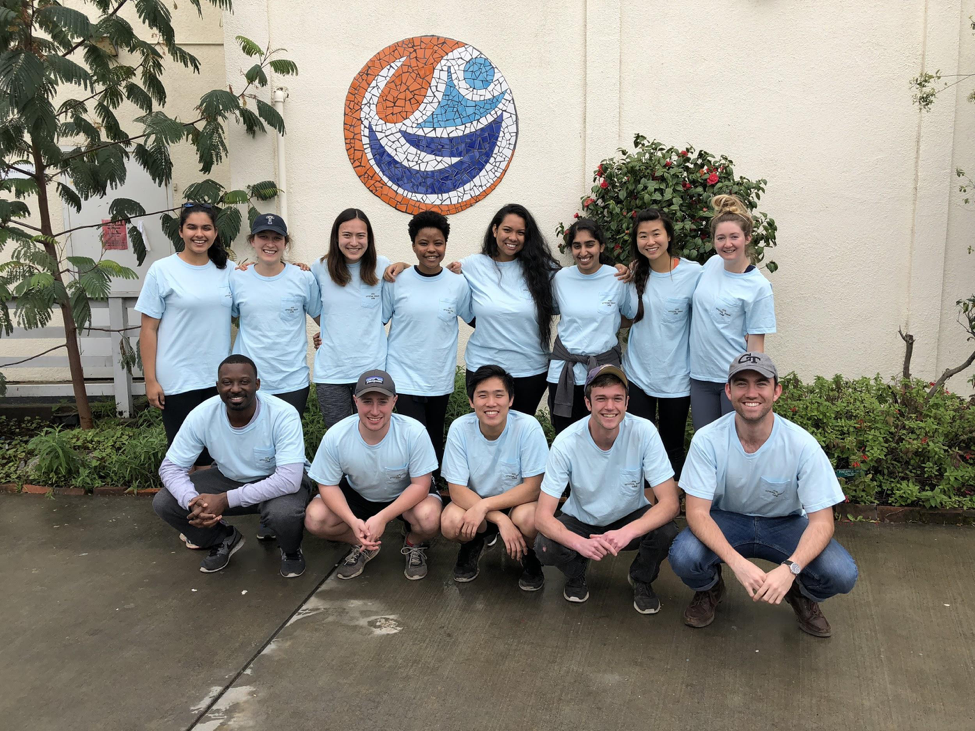
Sleepy-eyed and excited at 4:30 a.m., I embarked on a journey alongside 10 other students for my first spring break at Tech. We were off to Oakland, CA - a major trade center and a growing area for tech companies. Thus it is no stranger to gentrification as low-income people are leaving the city at disproportionately high rates.
With a 19.8 percent poverty rate and a continually increasing cost of living, creating and maintaining a sustainable community is a high priority in Oakland. Although I knew close to nothing about Oakland going into this trip, I was intrigued by the opportunity to engage in multiple service opportunities that would broaden my experiences and knowledge on community sustainability. My goal was to learn and connect with the people I served and worked with so that I could bring back what I learned to Atlanta.
We partnered with Community Collaborations International - an organization that supported our Alternative Service Break by connecting us with meaningful service opportunities. Throughout the week, we volunteered with four organizations.
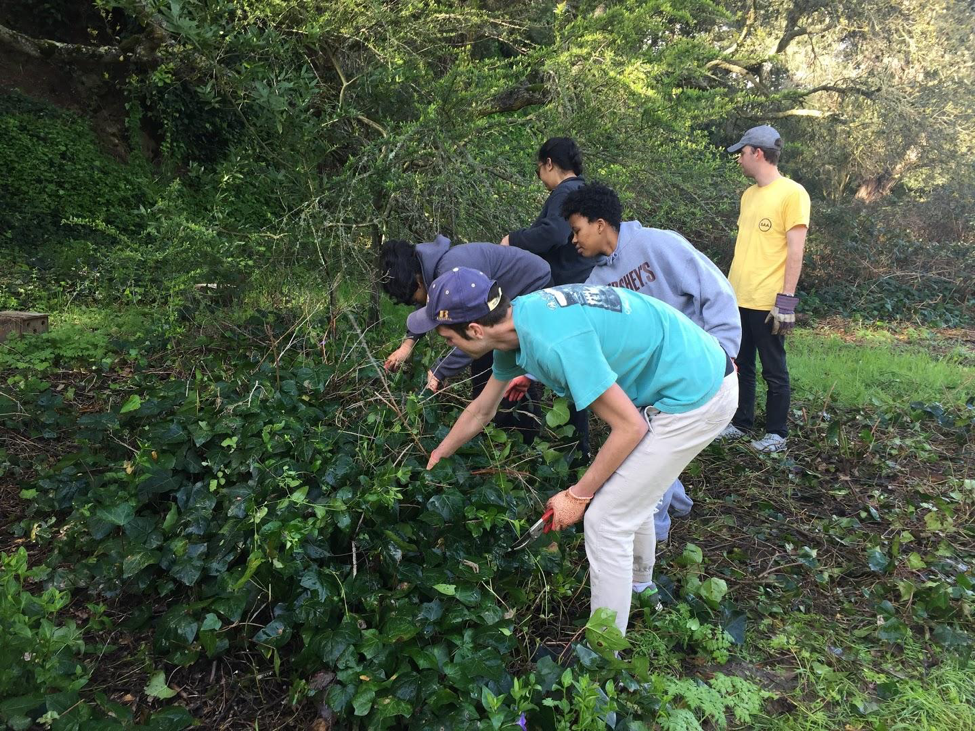 First, we volunteered for Friends of Sasual Creek removing invasive species (e.g. non-native blackberry and ivy) in the watershed area. These efforts to preserve the surrounding nature in Oakland reminded me of Atlanta’s community project to restore and protect the Proctor Creek Watershed. As a part of my SLS English course, we have learned about the environmental sustainability efforts in Atlanta’s Proctor Creek Watershed. My major takeaway from these experiences is that protecting nature against urbanization relies heavily on grassroots community efforts.
First, we volunteered for Friends of Sasual Creek removing invasive species (e.g. non-native blackberry and ivy) in the watershed area. These efforts to preserve the surrounding nature in Oakland reminded me of Atlanta’s community project to restore and protect the Proctor Creek Watershed. As a part of my SLS English course, we have learned about the environmental sustainability efforts in Atlanta’s Proctor Creek Watershed. My major takeaway from these experiences is that protecting nature against urbanization relies heavily on grassroots community efforts.
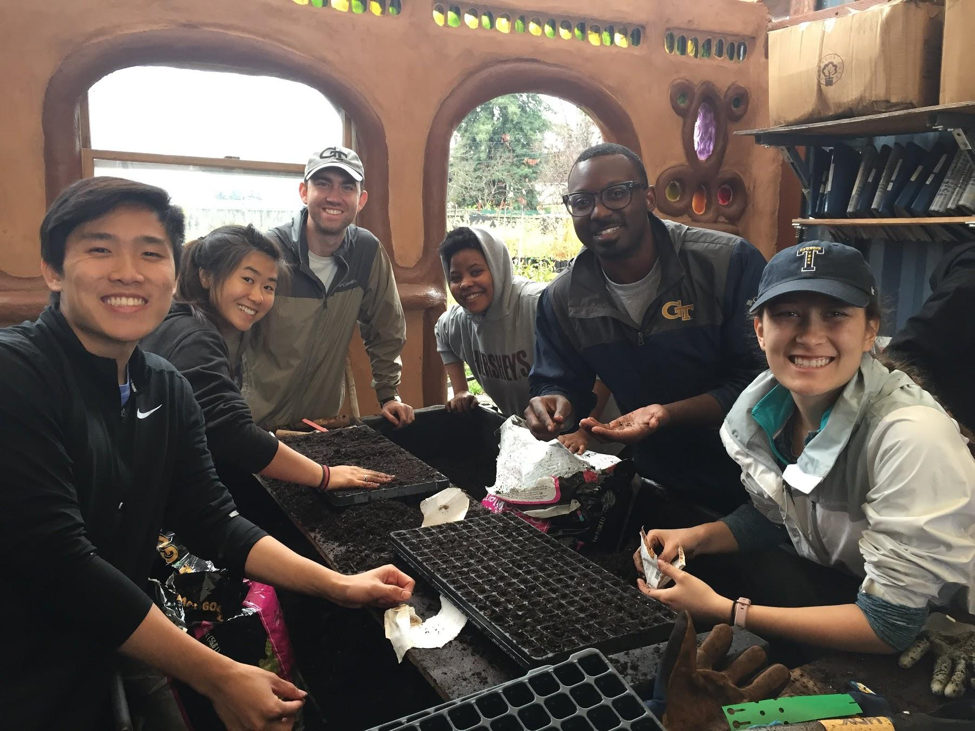
Second, we volunteered at Planting Justice, a non-profit food justice organization that grows edible permaculture gardens for all income brackets while employing men and woman transitioning from the prison system. Although a relatively small organization, Planting Justice’s strong core values have made quite a bold impact since 2009. They have planted over 400 gardens in the low-income areas of the bay area to promote equal access to healthy food options. They have implemented food justice curricula in 5 high schools. They have created about 20 jobs for people transitioning out of the prison system starting at $17.50/hour plus comprehensive health insurance. Meaningful employment in food justice has held their employee’s recidivism rate at 0%, compared to California’s 65%. Their goal is to become environmentally and economically self-sustaining so that they do not have to rely on donations when paying their employees. Everything Planting Justice envisions centers around sustainability and growth. While arms deep in soil, I felt strongly connected with the earth as well as those I worked with. I was mindful and invigorated. Healthy planting is very therapeutic and holds the key nutrients for food, economic, environmental, and social justice. Learning about food justice was one of the most enlightening experiences for me on this trip. I challenge you to join me in looking further into food justice, finding initiatives to improve Atlanta’s food sustainability, and getting involved.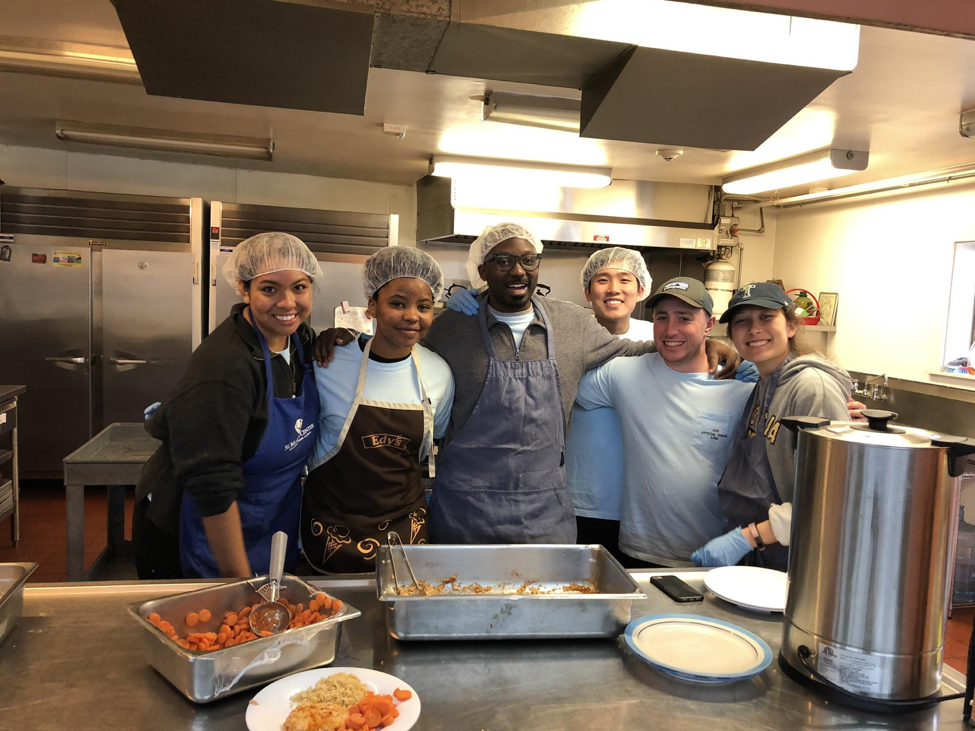
Third, we volunteered at St. Mary’s Center, a non-profit organization designed to provide essential services for at-risk seniors and preschoolers in Oakland. The organization stabilizes the lives of over 1,000 homeless senior citizens a year and provides a preschool for 48 children living in poverty. They provide mental health counseling, addiction recovery services, art/fitness classes, and $1 lunches. We had the opportunity to serve lunch and talk with some of the seniors who often lack company. Some had so much to say, while others spoke through kind smiles. I wish I could go back everyday to grow meaningful relationships with them and promote social stability between us.
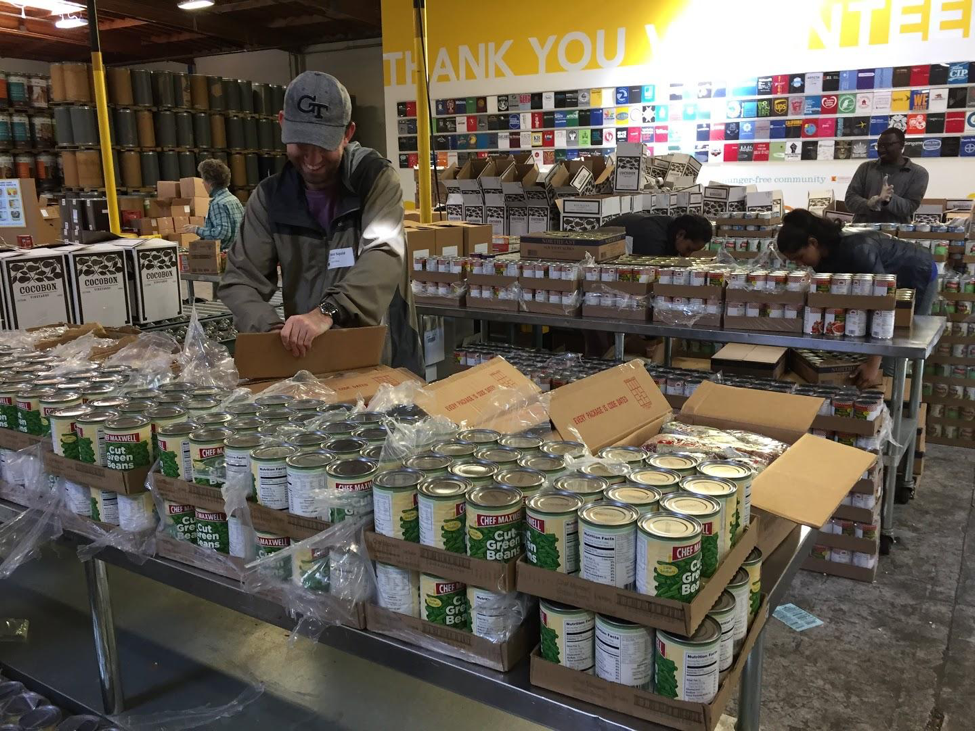 Lastly, we volunteered at the Alameda Food Bank, a private, non-affiliated, non-profit, tax-exempt agency that provides nutritious food to the low-income residents of the City of Alameda on a non-discriminatory basis. The whole operation runs mostly by unpaid volunteers. As volunteers, we bagged and sorted and boxed 165 lbs of collard greens, 2,478 lbs of carrots, 2,590 lbs of potatoes, 4,362 lbs of onions, and 8,482 lbs of Eat Well Live Well boxes in one day. 1 in 7 Americans are hungry. However, many don’t admit to others when they lack food because it can feel humiliating. When choosing between 50 McNuggets or a nutritious plate of fruits and vegetables, those who are hungry will go for the highest caloric value per buck. Healthy food in low-income areas is unaffordable. Food banks do important work in providing those with a variety of healthy, fresh foods, but ultimately our goal must be to put these food banks completely out of business.
Lastly, we volunteered at the Alameda Food Bank, a private, non-affiliated, non-profit, tax-exempt agency that provides nutritious food to the low-income residents of the City of Alameda on a non-discriminatory basis. The whole operation runs mostly by unpaid volunteers. As volunteers, we bagged and sorted and boxed 165 lbs of collard greens, 2,478 lbs of carrots, 2,590 lbs of potatoes, 4,362 lbs of onions, and 8,482 lbs of Eat Well Live Well boxes in one day. 1 in 7 Americans are hungry. However, many don’t admit to others when they lack food because it can feel humiliating. When choosing between 50 McNuggets or a nutritious plate of fruits and vegetables, those who are hungry will go for the highest caloric value per buck. Healthy food in low-income areas is unaffordable. Food banks do important work in providing those with a variety of healthy, fresh foods, but ultimately our goal must be to put these food banks completely out of business.
So it all comes back to sustainability... How can we achieve it? What I discovered on this trip is that to me, sustainability is all about meaningful relationships. We need to put time and care into our relationships with one another (all ages and backgrounds), with nature, and with our own health (mental, emotional, and physical). Relationships take time. It is important to keep that in mind when you seek to get involved in your community. Volunteering should not be a one-and-done check that off of a to-do list. I encourage you to engage with the organization you serve. Ask questions. Get to know their purpose, and if it aligns with your values, make it your purpose too. Critically think about how you could contribute in the long-term. Create this relationship with passion, and cultivate it with care. Advocate for it. Share ideas with other people. Connect.